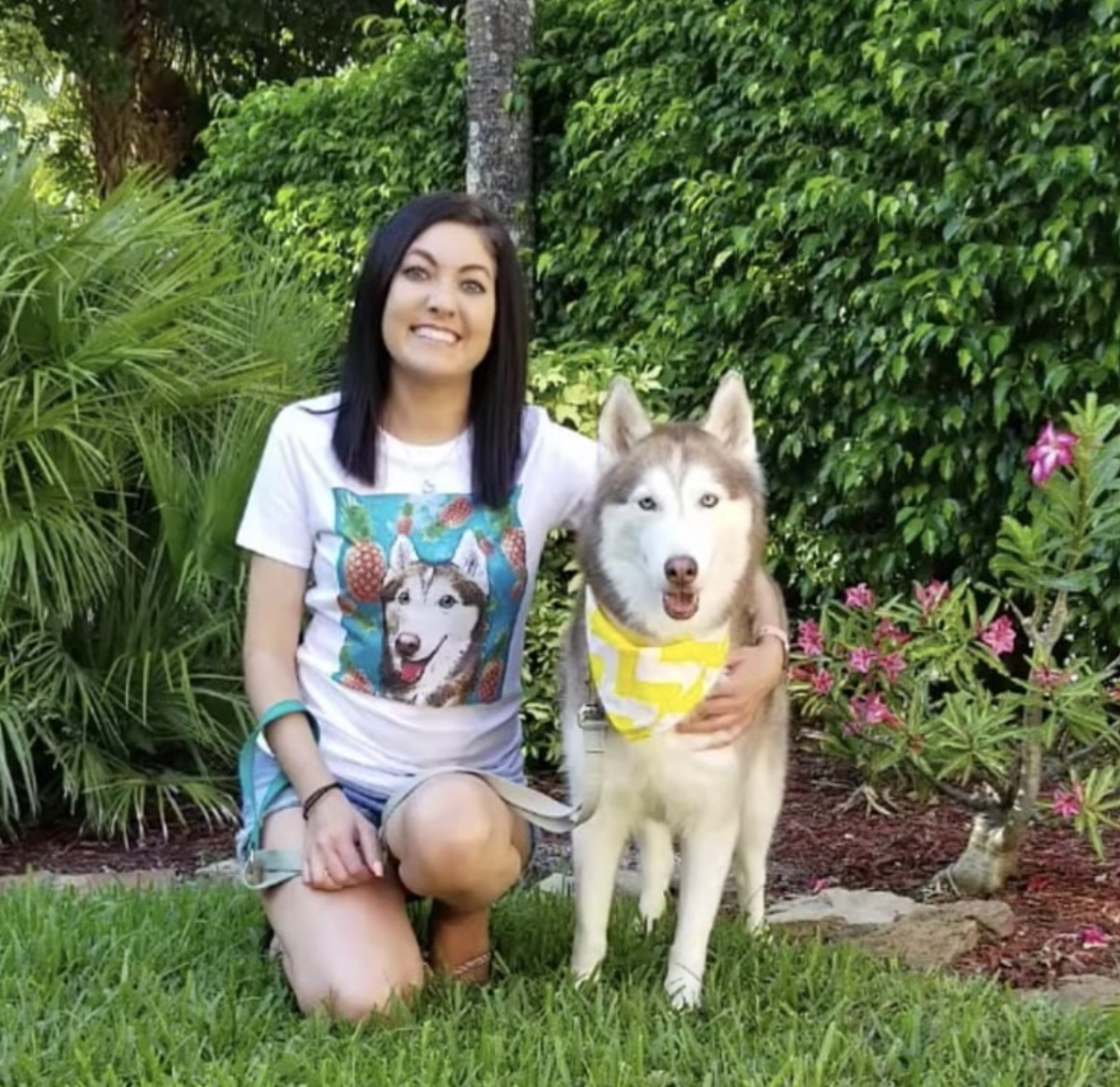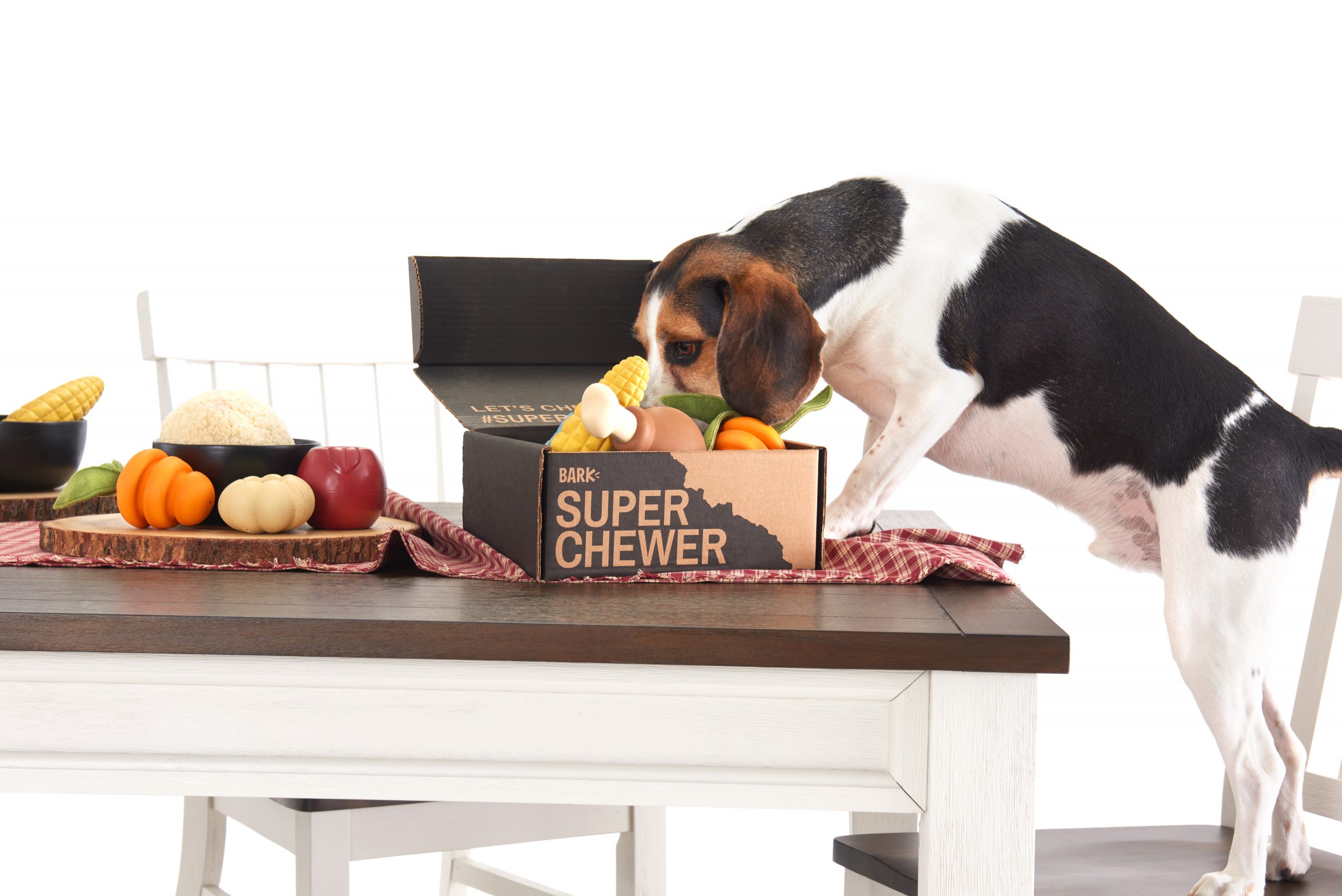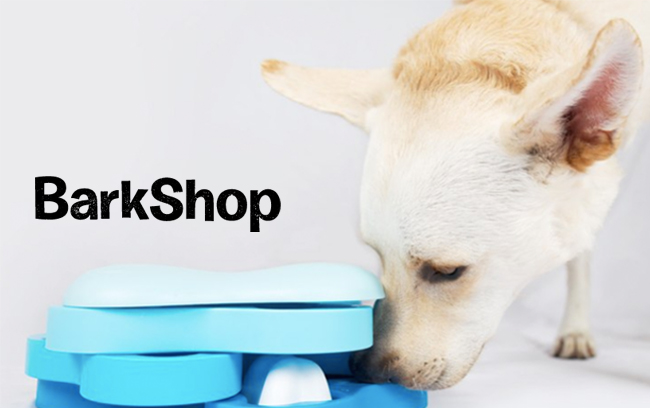We know that pup parents always have their dog’s best interest at heart. But sometimes, even with the best intentions, we can end up putting our dogs in harm’s way without knowing it. Here are some of the most common mistakes that you may not realize put your dog in danger.
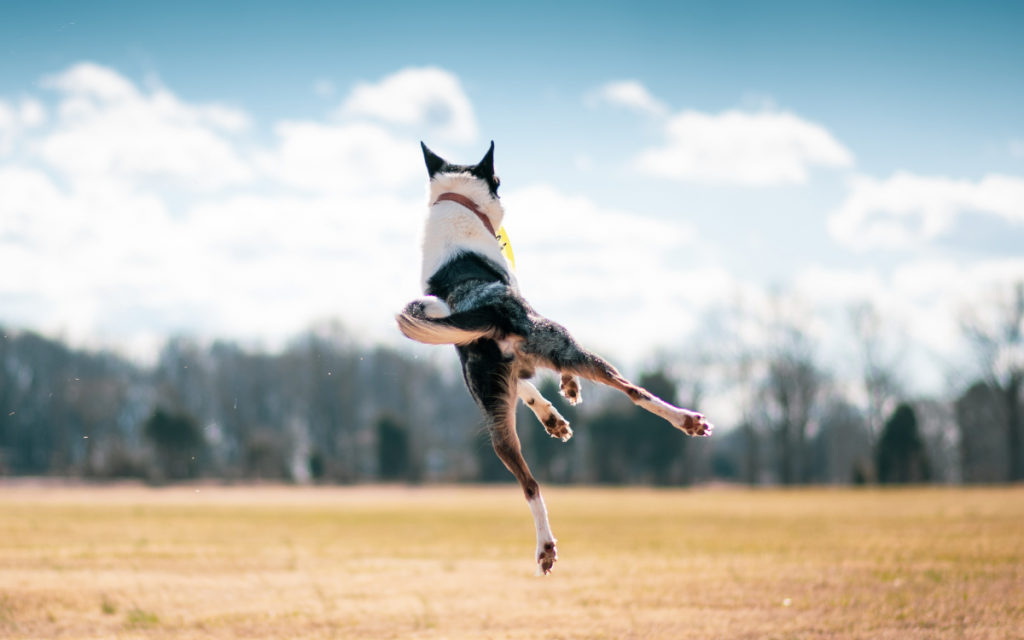

1. Not Properly Securing Your Dog When You Travel
This is our longest tip, but it’s also one of the most common mistakes dog parents make—your pup is too important! By “not properly securing your dog,” we’re talking about situations like:
- Allowing your dog to stick half their body out of the car window to catch a breeze
- Letting your dog free-roam in the car, or sit in your lap while you drive
- Traveling with your dog in the bed of a pickup truck (even when tethered)
- Securing your dog with the wrong type of seatbelt or harness
Why It’s Dangerous
Dogs who aren’t properly secured and buckled in a moving vehicle will become a projectile in an accident. Although dog-specific accident statistics are sparse, it’s reported that 30% of humans who don’t wear seatbelts in an accident are thrown from their car, compared to only 1% of those who do wear seatbelts1. Of those who are thrown from their car, an astonishing 75% die. The odds of your un-restrained dog surviving a crash are not in their favor. To make it worse, the distraction of a loose dog is often the cause of accidents in the first place.
In the case of dogs riding in the bed of a truck, it’s estimated that thousands of dogs die this way each year. It’s also illegal for dogs to ride in a bed of a truck in CA, CT, ME, MA, NH, and RI. Even when attached by a leash, dogs riding in truck beds or hanging out of a window may jump unexpectedly to chase an animal, or get thrown during an accident, ending in strangulation or serious injury.
What You Should Do Instead
- Use a high-quality crash-tested harness and seatbelt, or a crash-tested travel kennel. Not all harnesses and seatbelts are created equal. Cheap materials will snap or break when your dog’s life depends on them.
- Never secure a seatbelt directly to your dog’s collar. It can cause strangulation during a car accident. Instead, always pair a crash-tested dog seatbelt with a harness.
- Never roll your window down more than nose-level for sniff-exploration. Also, consider using the child-lock system for windows and doors. This will protect your dog from accidentally rolling the windows down farther, or opening the door in traffic.
- Always secure your dog inside the vehicle. It’s best to buckle them into the back seat. They can cuddle in your lap once you reach your destination. You may also want to avoid keeping your dog in the back cargo area of SUVs, especially when traveling on the highway. In case of a rear-end collision, your pup would be hit the hardest.
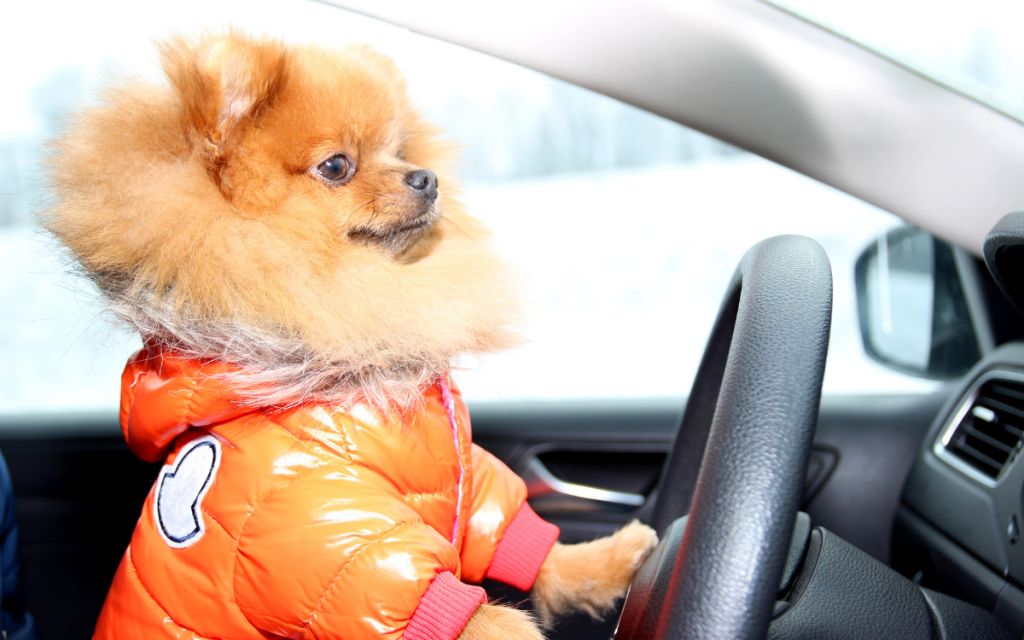

2. Assuming Your Dog Will Learn From Their Own Mistakes Without Your Guidance
Some pup parents assume their dog will learn from their own mistakes before any serious harm comes to them. They may let their dog do something they shouldn’t without intervening.
Why It’s Dangerous
Dogs are smart, but they’re only about as intelligent as toddlers. You would never, for example, let a toddler approach a wild animal, or chew on something they shouldn’t just to let them learn the hard way. The same should go for dogs! One of the most common reasons for accidental deaths, or the need for emergency surgery, is due to dogs eating an object they shouldn’t have2. Large objects often cause intestinal blockages when they can’t pass through the digestive system. Sharp objects may cause tears in their mouth or throughout their digestive tract. Animal encounters could end in serious injury, infection, disease, rabies… the list is endless. It is simply never worth your dog’s health or life to assume they’ll learn from an experience you could have prevented in the first place.
What You Should Do Instead
- In general, never allow your dog to do something you know could potentially harm them.
- Correct or stop your dog when they’re chewing on objects that aren’t meant to be eaten.
- Guide your dog toward appropriate activities.


3. Assuming All Dogs Can Swim Well
Surprisingly, not all dogs are strong swimmers. Even if you do have a dog who happens to be the canine Michael Phelps, accidents happen. Fast moving water, riptides, or a fall from a moving boat into open water can be too much for even the best swimmers to handle.
Why It’s Dangerous
In backyards alone, over 5,000 dogs die each year by drowning in the family swimming pool3. It’s also common for both people and dogs to get carried out to sea by riptides—especially when you’re not familiar with the beach you’re visiting. Other accidents happen when dogs fall off of moving boats into rough waters, or they drift away in fast-moving water. Even small lakes and rivers can become very rough with little notice. Sadly, dog parents often assume that because their dog knows how to swim, they’ll be capable of navigating water in conditions too difficult for them.
What You Should Do Instead
- Never leave your dog alone by a backyard pool.
- Buy your dog a life vest for boating trips, beach trips, and when you take your dog along for water activities.
- When boating, wait until the boat is stopped and it’s safe for your dog to jump in the water with you.
- Check beaches for riptide advisories before allowing your dog to swim.
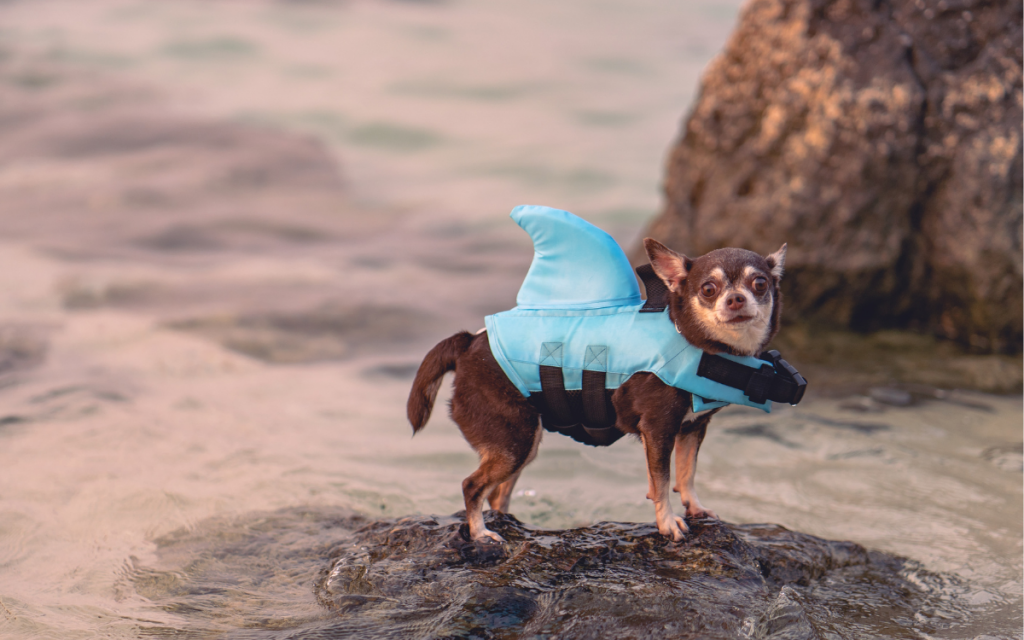

4. Letting Your Dog Eat Or Chew Things They Shouldn’t (And Assuming They’ll Throw It Up)
We touched on this a bit above. It’s all too common for people to let their dog eat anything that falls on the floor. Other times dogs pick up something so disgusting outside that you hesitate to pull it out of their mouth. The assumption many make is that their dog will throw it up if they weren’t supposed to eat it.
Why It’s Dangerous
Plenty of human foods and indoor/outdoor plants are toxic to dogs. Other objects can easily cause intestinal blockages when they’re not able to be thrown up. This includes socks, tennis balls, shoe strings, underwear, and feminine products. Sharp objects like sticks, bones, and children’s toys can puncture or tear your dog’s digestive tract. This often requires expensive emergency surgery, or can cause death if it’s not caught in time.
What You Should Do Instead:
- Make yourself aware of the main foods and plants that are toxic to pets.
- Don’t let your dog eat random objects, food, chicken bones, or dead animals on walks. Always do your best to pull it out of their mouth. If they swallow a mystery item, it’s a good idea to contact your vet and keep a close eye on your dog.
- Teach them the “leave it” or “drop it” command.
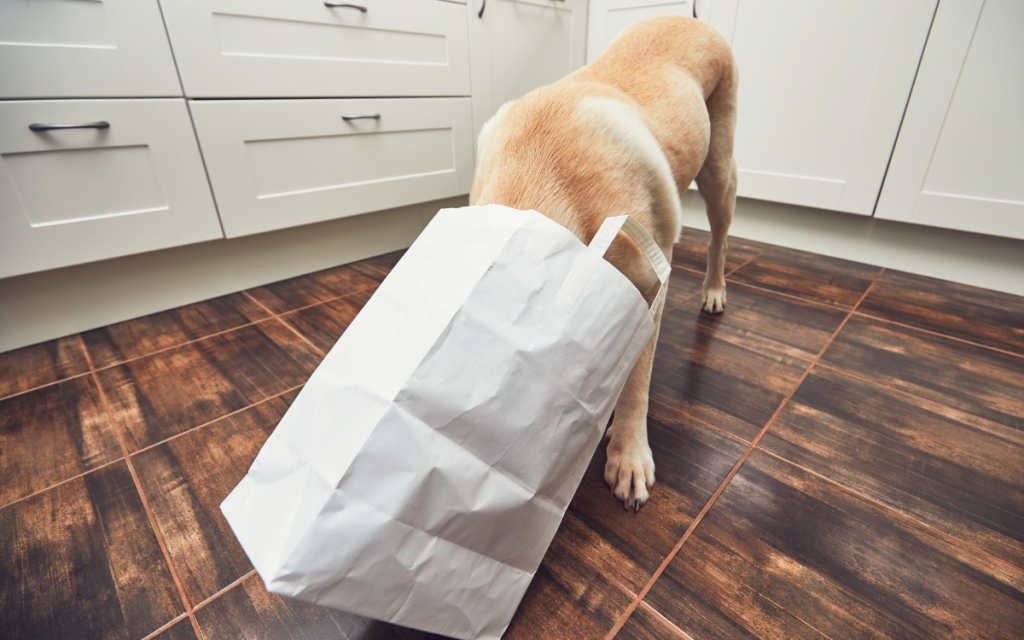

5. Leaving Your Dog In the Car Even With The Window Down
Luckily, in recent years there’s been a lot more information brought to light about the dangers of leaving your dog in the car. Unfortunately, these deaths are still occurring.
Why It’s Dangerous
Hundreds of dogs die each year from heat exhaustion after being left in a car4. For example, after just 30 minutes in a car on an 80°F day, the inside temperature of the car reaches about 115°F. This can quickly turn deadly. Even leaving a window cracked doesn’t allow for enough air to circulate.
What You Should Do Instead
- Run errands when your dog isn’t with you. Home-delivery grocery apps can also help when you’re in a time crunch.
- Plan ahead when traveling long distances alone with your dog. If you know your trip will require bathroom breaks, plan to look for dog-friendy stores along your route. Most pet stores and many hardware stores are dog friendly.
- Look for dog-friendly accommodations if you’re staying somewhere overnight. Many popular hotel chains have dog-friendly rooms.
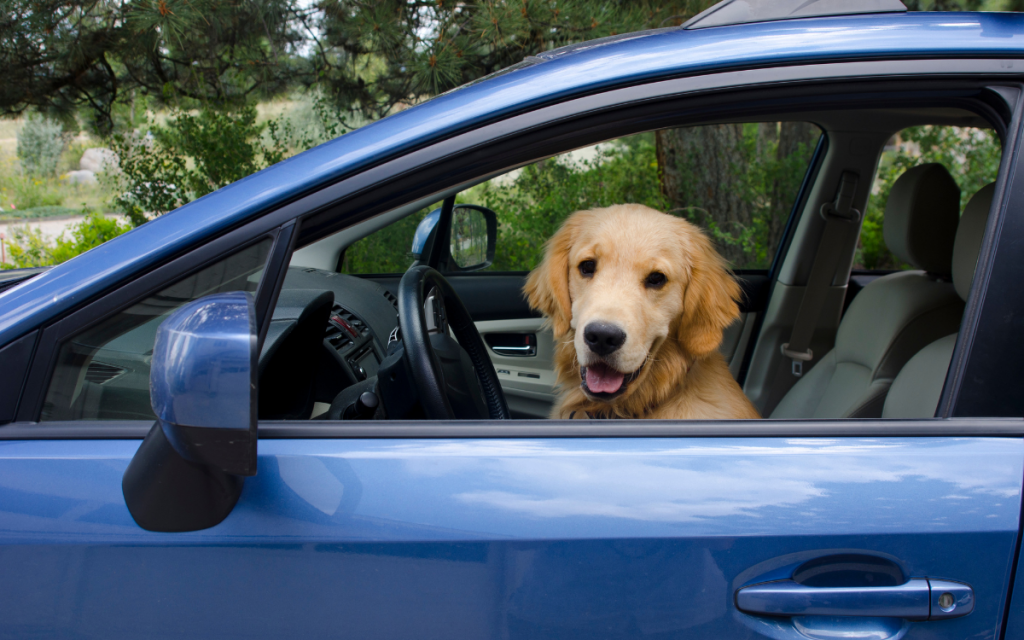

6. Brushing Off Little Dog Aggression As Cute Or Funny
It’s incredibly common to run across videos online of people poking fun at their small dog’s aggression, thinking it’s funny. It’s often paired with joking comments like, “Oh, you’re so tiny and vicious.”
Why It’s Harmful
First of all, dogs use body language like showing teeth, growling, excessive licking, laying their ears back tight against their head, or lowering themselves to the ground to express feelings of fear, anxiety, or aggression. This body language is the only way they’re capable of telling us how they feel. If your dog is growling or snapping, they’re not trying to be cute. They’re trying to tell you they need space. It’s important to listen when our dogs communicate with us the only way they know how.
When these behaviors aren’t addressed and corrected, you’re setting your tiny pup up for failure. Whether they’re being possessive over a toy or food, or growling at you for hugging them when they don’t want to be hugged, this can become dangerous later on. The aggressive behavior will continue no matter who’s around. This could result in bites to children who don’t know to stay away from their food, puppy sitters who don’t understand their triggers, or injuries to other dogs who don’t know to stay away from their toys.
What You Should Do Instead
- Learn how to read your dog’s body language and what they’re trying to communicate. They don’t growl, snap, and flatten their ears to make you laugh. They’re trying to tell you they’re scared, anxious, feel the need to protect themselves, or just need space. Your dog deserves respect.
- Learn how to address your dog’s fears and aggressive behaviors as soon as they start. Small dogs have a tendency to scare more easily, or feel the need to protect themselves from unfamiliar objects/people. Take small steps to introduce them to new situations, and reward them with treats for desired behaviors. Don’t hesitate to seek help from a trainer or dog behaviorist, even in your dog’s older years.
- Don’t provoke or ignore their aggressive behaviors, and especially don’t record it for laughs with your friends. Instead, address the issues. Get your internet likes and follows from your dog doing something they enjoy—not from them being scared.
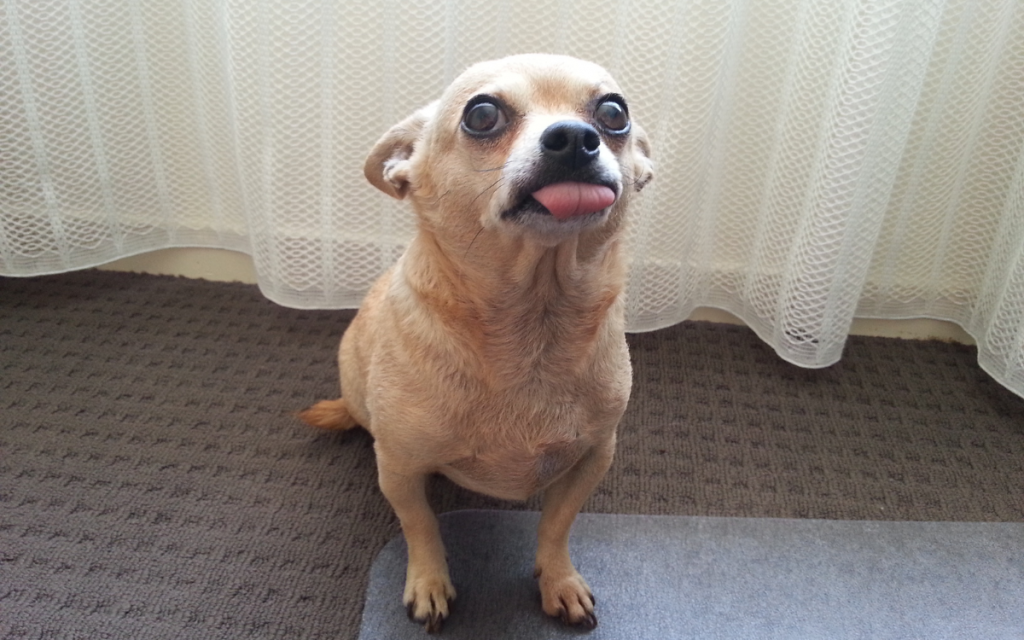

7. Letting Kids Sit On Large Dogs, Or Squeeze Small Dogs
Nope, sorry kid, the dog isn’t a pony or a toy!
Why It’s Dangerous
Dogs aren’t built to be ridden. Even a 2-year-old can weigh 30 lb. Large dogs can weigh 70–100 lb. It’s simply too much weight on your dog’s back and joints, and can lead to severe injury. Similarly, a toddler squeezing a small dog or puppy can lead to catastrophic injury. Dogs are only able to express their dislike or fear through body language. If you happen to miss or ignore the warning signs that your dog wants to be left alone, it can quickly lead to an entirely predictable bite.
What You Should Do Instead
- Teach kids how to respect animals’ personal space, and that animals have boundaries, too. Teach them how to respectfully pet your dog and play with them.
- Teach kids how to understand basic dog body language. Show them that a wagging tail doesn’t always mean a dog is happy. It can also mean they’re nervous or scared. A dog with ears tight back against their head, crouching low to the ground, cowering, showing teeth, growling, barking, or biting are all signs that the dog is likely uncomfortable.
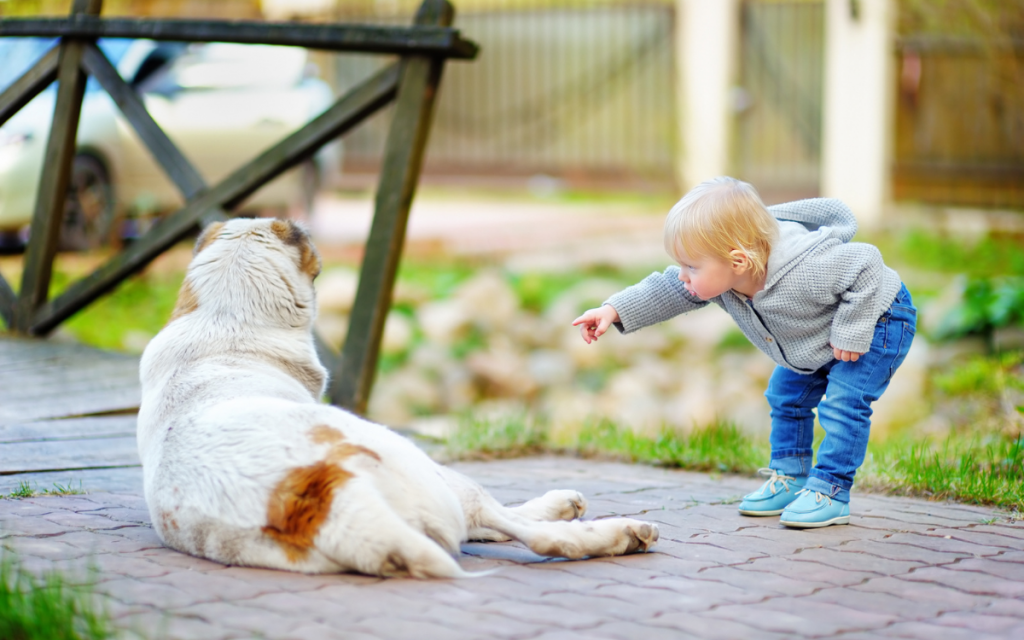

8. Walking Your Dog Without A Leash Even If They’re Trained Well
We’ve all run into that dog parent walking their dog off leash who insists, “It’s ok, they’re friendly.” But that doesn’t mean other dogs they encounter feel the same way.
Why It’s Dangerous
One of the biggest problems with this is that leashed dogs may NOT do well with other dogs. The parent of a leashed dog is already taking the responsible step to protect their dog and others. There’s not much else they can do to prevent a fight if an unleashed dog comes running up to them to say “hi!” This can lead to either dog—or both dogs—being seriously injured in a sudden fight.
It’s important to factor in that even the most well-trained dog is driven by natural instinct. It only takes a single incident to be enticed by a running animal, or spooked into traffic. Consider the danger you could be putting your dog in if they run into someone who’s afraid of dogs, or feels the need to protect themselves (especially with the use of a weapon).
What You Should Do Instead
- Always leash your dog unless you’re in a dog park or in your own yard. It’s as simple as that—be respectful.
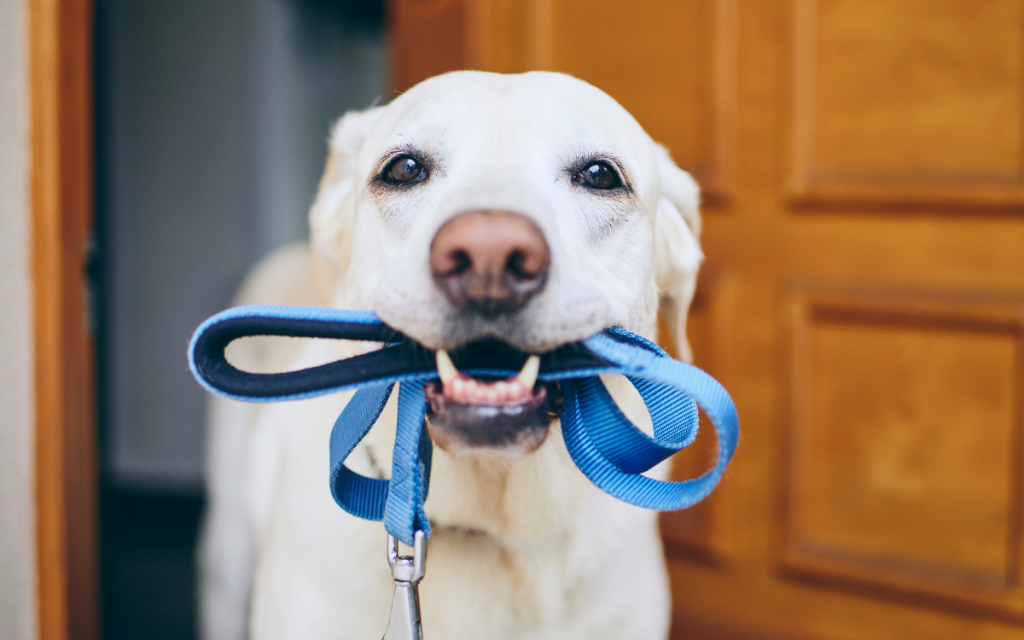

9. Neglecting Your Dog’s Teeth
Did you know that 80% of dogs develop dental disease before they even celebrate their 3rd birthday5? It’s one of the most important aspects of your dog’s health, but also one of the most overlooked. Putting off doggie dental cleanings, not brushing their teeth, and ignoring bad breath can lead to serious health issues down the line.
Related Article: 5 Ways Dental Disease Affects Your Dog’s Health
Why It’s Harmful
Imagine never brushing your teeth for years on end. Even more disturbing—imagine never brushing your teeth once in your entire life! This is what many dogs’ lives look like. All that neglect, and plaque and tartar buildup, turn into dental disease. As the condition progresses, it can lead to tooth decay, bone loss, infection, eye and sinus issues, and even heart, kidney, or liver disease once infections spread through the bloodstream.
What You Should Do Instead
- Schedule your dog for routine check-ups and dental exams.
- Talk to your vet about routine professional dental cleanings.
- Brush your dog’s teeth with a dog-friendly toothpaste (human toothpaste often has ingredients toxic to dogs, like xylitol)
- Give them daily dental chews.
- Provide plenty of chew toys.
- Consider dental water additives, sprays, gels, or wipes.
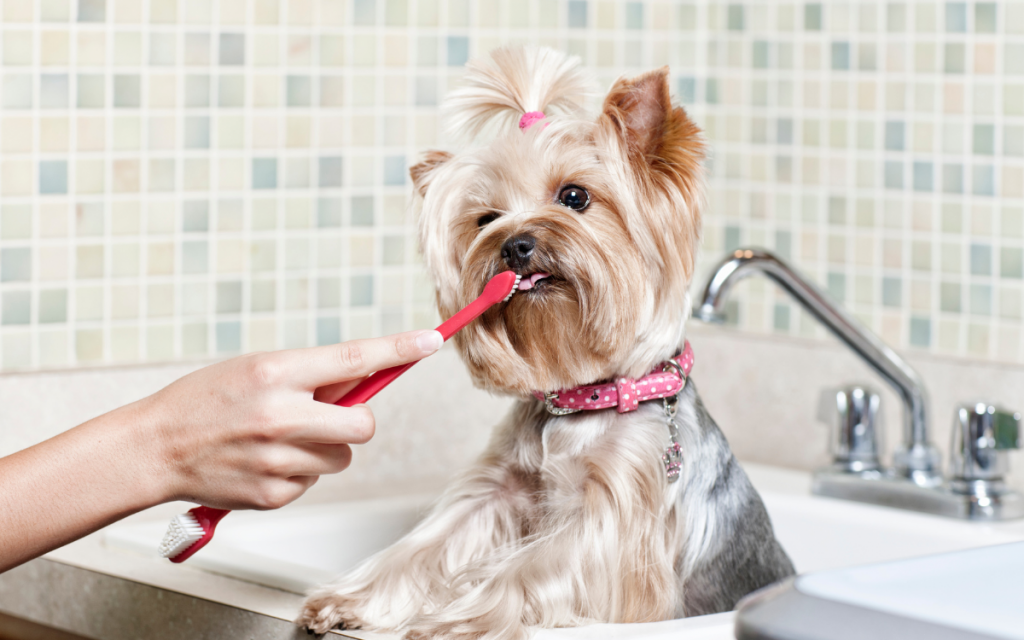

10. Using Physical Punishment Or Delayed Punishment
This includes hitting them (on the butt or nose) after they do something wrong, or punishing them after time has already passed since the unwanted behavior.
Why It’s Harmful
Studies have shown that physical punishment actually delays your dog’s ability to learn the correct behavior6. Instead, it’s much more likely to make your dog fear you and take longer to figure out what you’re trying to teach them.
Next, let’s take a look at delayed punishment. This includes things like yelling at or punishing your dog after time has passed since they did something they weren’t supposed to. For example, say your dog chews up your shoes while you’re at work, then takes a nap for a few hours. If you get home and yell at them, it’s more likely to leave them wondering, “why is mom yelling at me for napping?” Yes, dogs have a good memory, but they have trouble connecting the dots between what they did hours ago, and a punishment later on.
What You Should Do Instead
- Reinforce the correct behaviors you want from your dog with praise and treats.
- Redirect them toward the correct behavior when you see them doing something you don’t want them to do. Then, give them a treat. It sounds counterintuitive, but dogs learn much better (and more quickly) this way. The quicker they learn, the easier it makes the training process for you!
- Prevent your dog from getting into mischief in the first place. Make sure to puppy-proof the house when you leave. You may even want to consider purchasing a puppy nanny cam to keep an eye on them while you’re away.
- Seek help from a professional trainer—i’s what they’re there for!
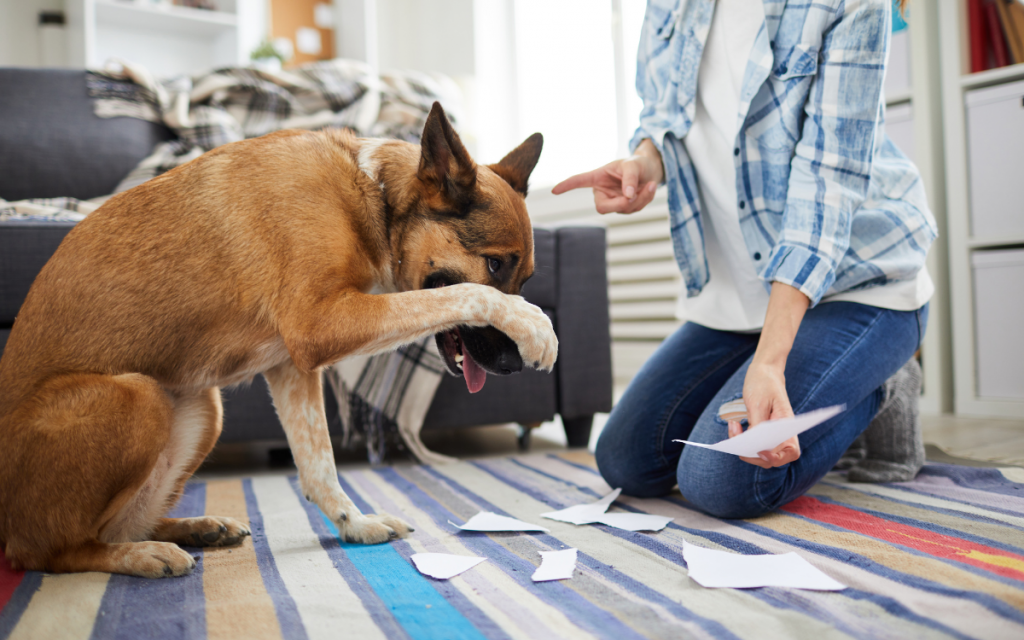

11. Leaving Your Dog Alone In The Yard
A surprising amount of horrible things can go wrong when you’re not around to keep an eye on your dog.
Why It’s Harmful
Your dog can get into a lot of trouble when left to their own devices. Some backyard dangers to consider: wild animals carrying disease, toxic plants, garden supplies and chemicals, harm from extreme weather, or your dog escaping over/under the fence. There have even been instances of strangers stealing, poisoning, hurting, or even shooting dogs left alone in their yard.
What You Should Do Instead:
- Always keep an eye on your dog while they’re outside. Either go outside with them, or stay near a window where you can keep an eye on them.
- Make sure your fence is high enough that your dog can’t get out, and other humans can’t get in. You should also check the fence foundation to make sure your dog can’t dig underneath.
- Keep a lock on gates and keep gates closed.
- Consider installing a camera in your backyard to keep an eye on your dog, as well as anyone who is possibly coming or going from the area.
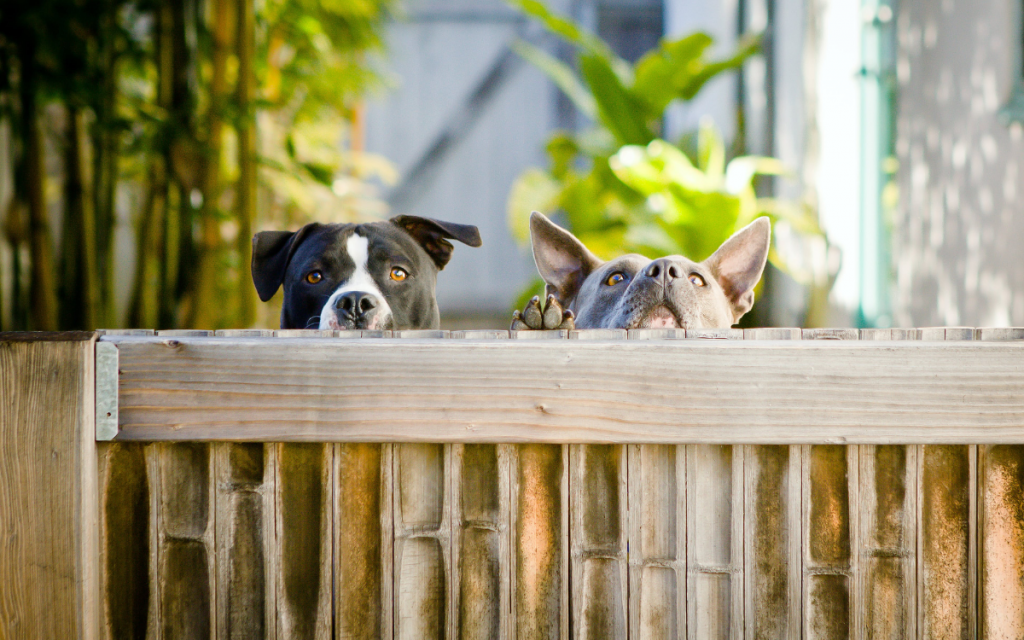

12. Yanking On Your Dog’s Leash
Yanking on your dog’s leash is often a snap judgment. It’s likely you’re trying to keep them from eating something, or heading toward trouble.
Why It’s Dangerous
Yanking or pulling on your dog’s leash quickly and unexpectedly can cause injuries similar to whiplash. It can also put too much strain on your dog’s esophagus. One study found that from 2001–2008 there were 193,483 leash-pulling related accidents that required emergency vet visits7. Yes, dogs often keep pulling even to their own detriment, which leads to them choking themselves while trying to pull. This can cause similar damage as yanking or pulling.
What You Should Do Instead
- Use an easy-walk harness or gentle leader instead of attaching a leash directly to your dog’s collar. If your dog tends to pull a lot, it’s best to look into the gentle leader option, or harnesses that clip in front of their chest to prevent pulling.
- Work with your dog on “leave it” commands, and heeling.
- Keep a shorter leash, and avoid using retractable leashes.
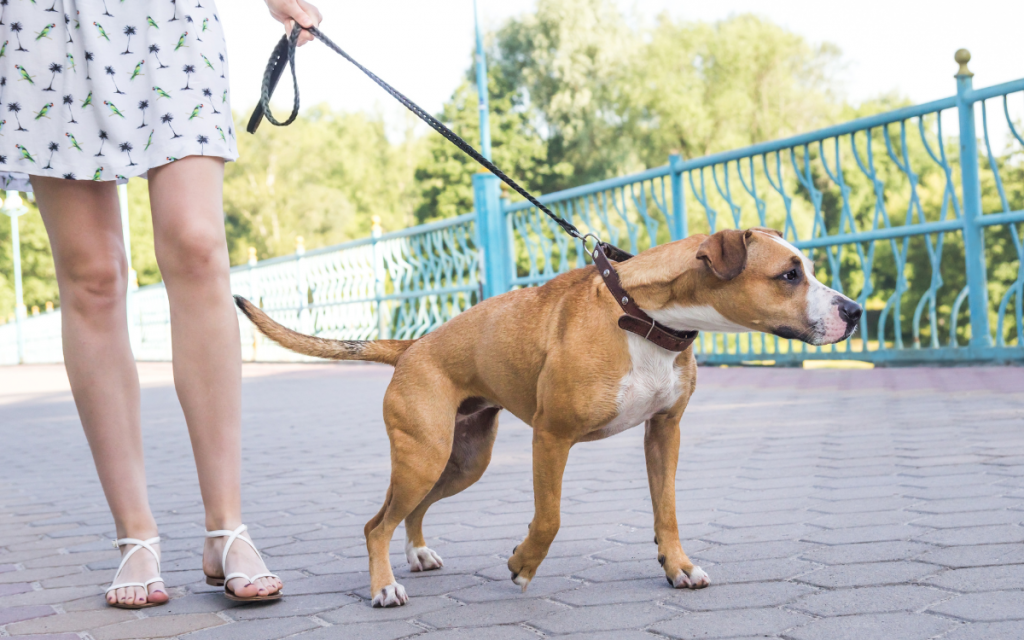

13. Letting Your Dog Go “Nakey”
What pet parent doesn’t love taking their dog’s collar off and yelling, “You’re nakey now!” But beyond letting your dog go collarless during a bath or while they’re in their crate, your dog should really have their collar on at all times.
Why It’s Dangerous
Dogs always have tricks up their sleeves, and find ways to sneak outside, through gates, or under fences at a moment’s notice. This can leave them lost with no ID. Dogs most commonly run away during thunderstorms, fireworks, in the case of house fires, or after car accidents. If your dog happens to have their collar off at any of these inopportune times, it may be a struggle to get them back home.
What You Can Do Instead
- Keep your dog’s collar on, even in the house (supervised).
- Microchip them so they can always be identified in an emergency.
- Consider a GPS collar for dogs known to run or escape.
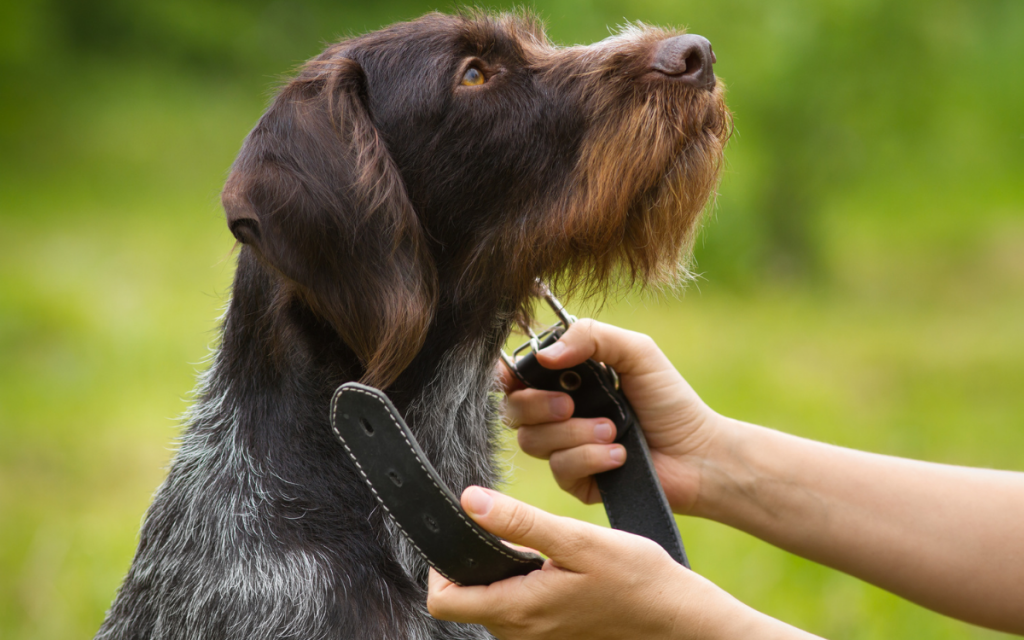

14. Shaving Your Double-Coated Breed
It seems logical to want to shave your dog in the heat of summer. That thick coat must be hot, right? As counterintuitive as it sounds, shaving a double-coated breed can do more harm than good.
What Is A Double-Coated Breed?
A few of the most common double-coated dog breeds include Siberian huskies, Malamutes, golden retrievers, German shepherds, border collies, Labradors, and springer spaniels. These are breeds who have two layers of fur—an undercoat of insulating fur, and an outer layer of guard hairs to protect from sun, bug bites, and other environmental elements.
Why It’s Harmful
Dogs’ coats don’t just insulate them to protect against cold. They also protect them from heat8, sunburn, and skin cancer. Dogs with double-layered coats have a thick, plush undercoat that keeps them warm in the winter. In warmer months, they shed this undercoat to keep them cool. The thinner undercoat allows air flow to their skin while the longer outer guard hairs protect them from the sun and insects. Shaving a double-coated dog actually removes their ability to stay cooler in the heat, along with any protection they have against UV rays.
What You Should Do Instead
- Brush your dog frequently to remove excess fur.
- If you feel that it’s too hot out for your dog, keep them inside with the A/C or with circulating fans on hotter days.
- Walk your dog in early morning and evening to avoid higher temps.
- Buy your dog a sprinkler or kiddie pool and fill it with cool water.
- Look into a doggie daycamp option near you with climate control, or doggie water parks in the summer.
- Purchase a cooling pad, or a bed with cooling memory foam.
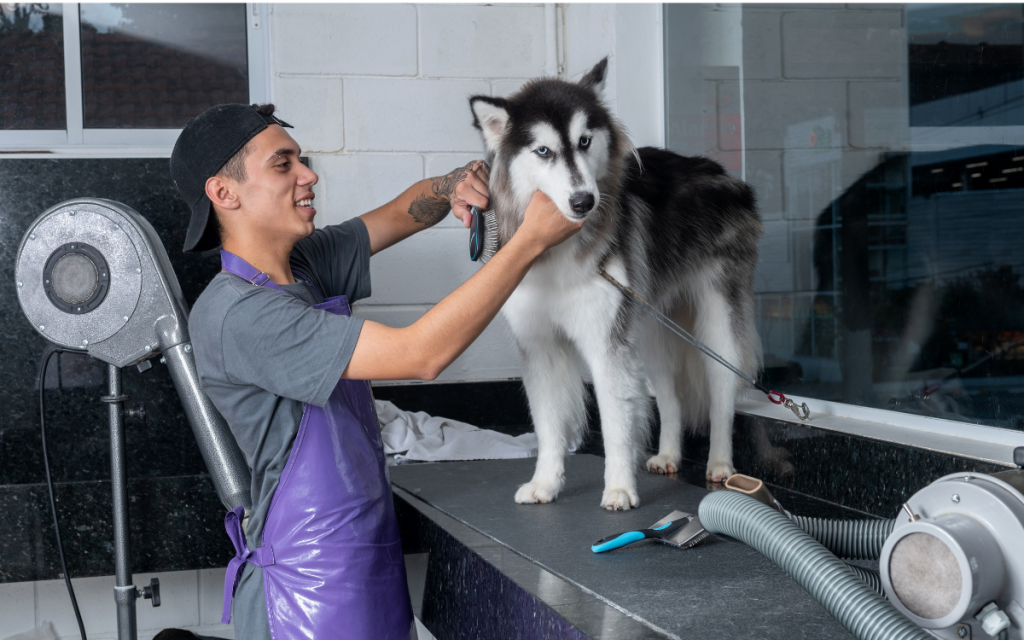

Sources
1Coleman, Phyllis. “Keeping That Doggie in the (Car) Window Safe: Recommendations for Driving with Canine Companions.” Core, Pace Law Review, Apr. 2018, https://core.ac.uk/download/pdf/212892499.pdf.
2Fages, Aida, et al. “Perioperative Outcome in Dogs Undergoing Emergency Abdominal Surgery: A Retrospective Study on 82 Cases (2018-2020).” Veterinary Sciences, U.S. National Library of Medicine, 28 Sept. 2021, https://www.ncbi.nlm.nih.gov/pmc/articles/PMC8540698/.
3Williams, Jane. “Keeping Your Dog Safe around Your Backyard Pool.” Halifax Humane Society, 25 Mar. 2021, https://www.halifaxhumanesociety.org/Keeping-Your-Dog-Safe-Around-Your-Backyard-Pool-1-9623.html.
4“Travel Training for You and Your Pets.” U.S. Food and Drug Administration, FDA, https://www.fda.gov/animal-veterinary/animal-health-literacy/travel-training-you-and-your-pets.
5Niemiec, Brook A. “Periodontal Disease.” Topics in Companion Animal Medicine, W.B. Saunders, 13 May 2008, https://www.sciencedirect.com/science/article/abs/pii/S1938973608000056.
6Steiss, J.E., et al. “The Effects of Using Aversive Training Methods in Dogs-A Review.” Journal of Veterinary Behavior, Elsevier, 22 Feb. 2017, https://www.sciencedirect.com/science/article/abs/pii/S1558787817300357.
7Forrester, Mathias. “Dog Leash-Related Injuries Treated at Emergency Departments.” The American Journal of Emergency Medicine, U.S. National Library of Medicine, May 2020, https://pubmed.ncbi.nlm.nih.gov/32739848/.
8Yarnell, K., et al. “Quantifying Body Surface Temperature Differences in Canine Coat Types Using Infrared Thermography.” Journal of Thermal Biology, Pergamon, 8 Mar. 2019, https://www.sciencedirect.com/science/article/abs/pii/S0306456518305503.

